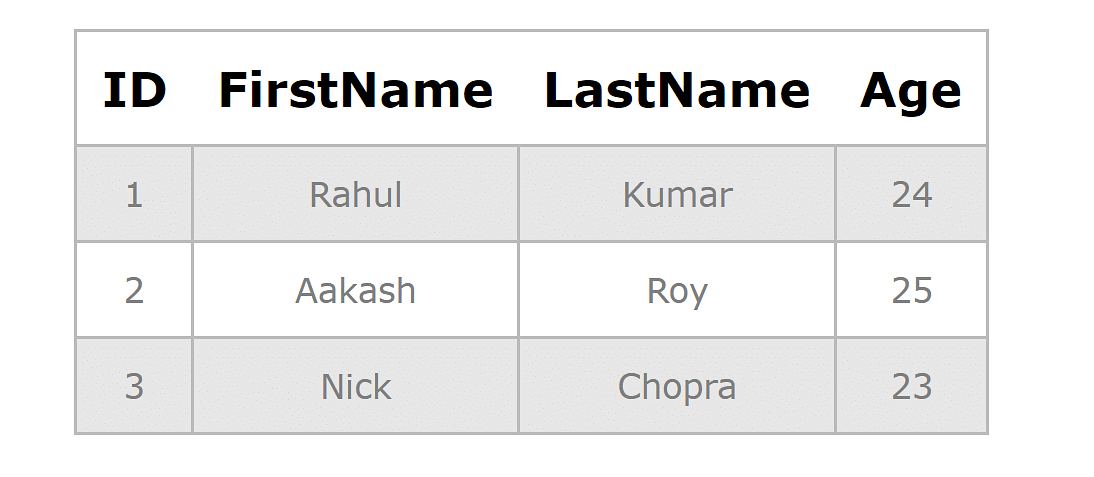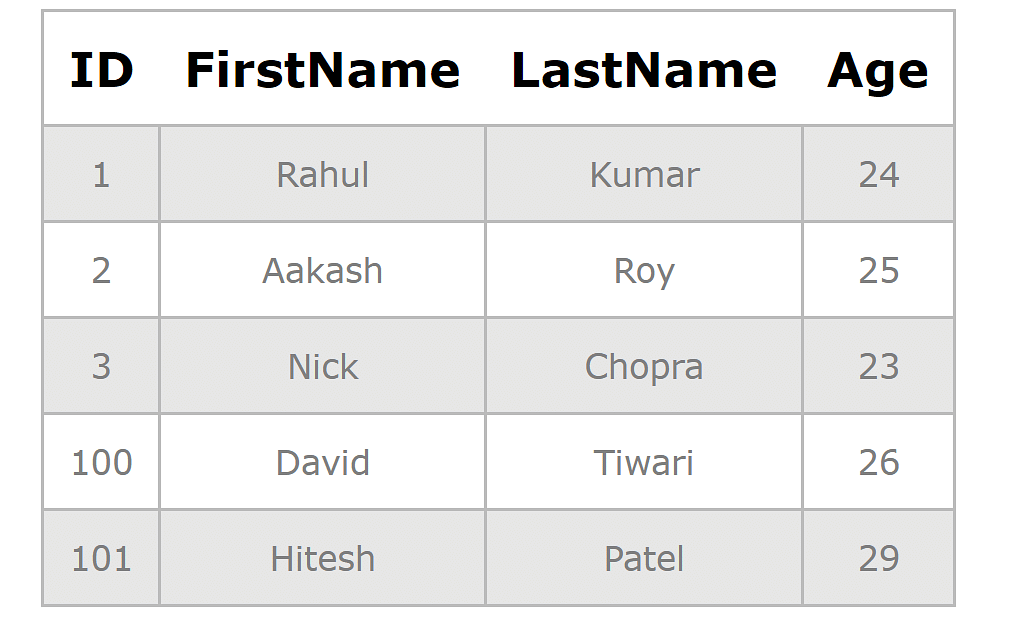Whilst running with huge databases in SQL, a number of tables and information fields would require distinctive numbers. As an example, a column of the desk with a PRIMARY KEY or UNIQUE constraint will at all times require a brand new quantity. You could possibly do it manually to a restricted extent. However, in the case of huge databases, it’s possible you’ll disregard the closing distinctive quantity you entered, or simply come with the similar quantity two times because it isn’t simple to bear in mind the entirety. But even so the reminiscence factor, offering a singular quantity to the entire information may be a tedious activity. That’s the place auto increment in SQL is available in to play its section.
How one can Set Up Auto Increment in SQL?
Now, since what the SQL auto increment box does, let’s set it as much as routinely generate distinctive numbers for the information you input within the database desk. A number of databases improve SQL auto increment fields. You are going to be going via some number one DBMS techniques and take a look at the right way to arrange an auto increment column. You’ll have to create a Scholars desk in the entire DBMS and set auto increment in SQL.
Auto Increment in SQL: Setup for MySQL
Within the MySQL server, it applies an auto increment box with the key phrase AUTO_INCREMENT. By means of default, it begins with the number 1 and will increase the price by means of one for every new report. Within the instance underneath, you’ll use the CREATE TABLE command to create a Scholars desk and follow PRIMARY KEY and AUTO_INCREMENT to the ID column. After making the desk, you’ll use the INSERT INTO command so as to add rows with out offering the ID column’s price.
— Growing desk
CREATE TABLE Scholars(
ID int PRIMARY KEY AUTO_INCREMENT,
FirstName varchar(25) NOT NULL,
LastName varchar(25),
Age int
);
— Placing values
INSERT INTO Scholars (FirstName, LastName, Age) VALUES (‘Rahul’, ‘Kumar’, 24);
INSERT INTO Scholars (FirstName, LastName, Age) VALUES (‘Aakash’, ‘Roy’, 25);
INSERT INTO Scholars (FirstName, LastName, Age) VALUES (‘Nick’, ‘Chopra’, 23);
— Fetching values
SELECT * FROM Scholars;
Output:

As you’ll be able to see within the output, auto increment in SQL supplied the ID column with distinctive numbers as anticipated.
You’ll additionally make an auto increment in SQL to begin from any other price with the next syntax:
ALTER TABLE table_name AUTO_INCREMENT = start_value;
Within the syntax above:
- start_value: It’s the price from the place you need to start out the numbering
Use the syntax to begin the numbering from 100 within the Scholars desk after which upload extra rows to peer it in motion.
ALTER TABLE Scholars AUTO_INCREMENT = 100;
INSERT INTO Scholars (FirstName, LastName, Age) VALUES (‘David’, ‘Tiwari’, 26);
INSERT INTO Scholars (FirstName, LastName, Age) VALUES (‘Hitesh’, ‘Patel’, 29);
SELECT * FROM Scholars;
Output:

Our Unfastened Classes with Certificates
Auto Increment in SQL: Setup for SQL Server
The SQL Server makes use of the IDENTITY key phrase to set auto increment with the next syntax whilst making a desk:
IDENTITY (initial_value, increment_value);
Within the above syntax:
- initial_value: It’s the price from the place you need the numbering to start out
- increment_value: It’s the increment between every auto-generated quantity
Let’s create the similar Scholars desk within the SQL Server and use the IDENTITY key phrase to set auto increment. This time you’ll immediately get started with 1000 and feature an period of five between every row’s quantity.
— Growing desk
CREATE TABLE Scholars(
ID int IDENTITY(1000, 5) PRIMARY KEY,
FirstName varchar(25) NOT NULL,
LastName varchar(25),
Age int
);
— Placing values
INSERT INTO Scholars (FirstName, LastName, Age) VALUES (‘Rahul’, ‘Kumar’, 24);
INSERT INTO Scholars (FirstName, LastName, Age) VALUES (‘Aakash’, ‘Roy’, 25);
INSERT INTO Scholars (FirstName, LastName, Age) VALUES (‘Nick’, ‘Chopra’, 23);
— Fetching values
SELECT * FROM Scholars;
Output:

Auto Increment in SQL: Setup for MS Get entry to
The AUTOINCREMENT key phrase is used to arrange auto increment in MS Get entry to. The default beginning and increment values for AUTOINCREMENT are 1 and 1, respectively. Alternatively, you’ll be able to simply alternate it whilst surroundings the automobile increment with the next syntax:
AUTOINCREMENT(start_value, increment_value);
Within the above syntax:
- start_value: It’s the price from the place you need the numbering to start out
- increment_value: It’s the increment between every auto-generated quantity
This time you’ll create a Students1 desk within the instance underneath with the MS Get entry to server and arrange auto increment in SQL with the similar enter values. On this case, you need to set the start_value to 200 and increment_value to 4.
— Growing desk
CREATE TABLE Students1(
ID int AUTOINCREMENT(200,4) PRIMARY KEY,
FirstName varchar(25) NOT NULL,
LastName varchar(25),
Age int
);
— Placing values
INSERT INTO Students1 (FirstName, LastName, Age) VALUES (‘Rahul’, ‘Kumar’, 24);
INSERT INTO Students1 (FirstName, LastName, Age) VALUES (‘Aakash’, ‘Roy’, 25);
INSERT INTO Students1 (FirstName, LastName, Age) VALUES (‘Nick’, ‘Chopra’, 23);
— Fetching values
SELECT * FROM Students1;
Output:

Auto Increment in SQL: Setup for Oracle
To arrange auto increment in Oracle, you’ll have to create a series object first. This object is used to generate a bunch series. Right here’s how you’ll be able to use the CREATE SEQUENCE remark in Oracle to create a series object for the Scholars’ desk.
CREATE SEQUENCE seq_Students
MINVALUE 1
START WITH 20
INCREMENT BY 2
CACHE 20;
The syntax above will create a series object named seq_Students that begins with 20 and will increase by means of 2 with a cache of 20 (the collection of series values saved in reminiscence). You are going to now use the integrated nextval serve as so as to add values with the automobile increment characteristic and notice it in motion. Let’s create the desk Scholars and insert the values.
CREATE TABLE Scholars(
ID quantity(10) PRIMARY KEY,
FirstName varchar2(50) NOT NULL,
LastName varchar2(50),
Age quantity(10)
);
INSERT INTO Scholars (ID, FirstName, LastName, Age) VALUES (seq_Students.nextval, ‘Rahul’, ‘Kumar’, 24);
INSERT INTO Scholars (ID, FirstName, LastName, Age) VALUES (seq_Students.nextval, ‘Aakash’, ‘Roy’, 25);
INSERT INTO Scholars (ID, FirstName, LastName, Age) VALUES (seq_Students.nextval, ‘Nick’, ‘Chopra’, 23);
— Fetching values
SELECT * FROM Scholars;
Output:

Auto Increment in SQL: Setup for PostgreSQL
In PostgreSQL, the SERIAL key phrase is used to arrange an auto increment column. SERIAL in PostgreSQL is an information sort, like BIGSERIAL and SMALLSERIAL. However it works very similar to the automobile increment in SQL. Alternatively, you can not set a beginning price or the increment price of your selection explicitly. Right here’s how you’ll be able to create a desk and use the SERIAL key phrase to set auto increment in PostgreSQL.
— Growing desk
CREATE TABLE Scholars(
ID SERIAL PRIMARY KEY,
FirstName TEXT NOT NULL,
LastName TEXT,
Age int
);
— Placing values
INSERT INTO Scholars (FirstName, LastName, Age) VALUES (‘Rahul’, ‘Kumar’, 24);
INSERT INTO Scholars (FirstName, LastName, Age) VALUES (‘Aakash’, ‘Roy’, 25);
INSERT INTO Scholars (FirstName, LastName, Age) VALUES (‘Nick’, ‘Chopra’, 23);
— Fetching values
SELECT * FROM Scholars;
Output:

supply: www.simplilearn.com












